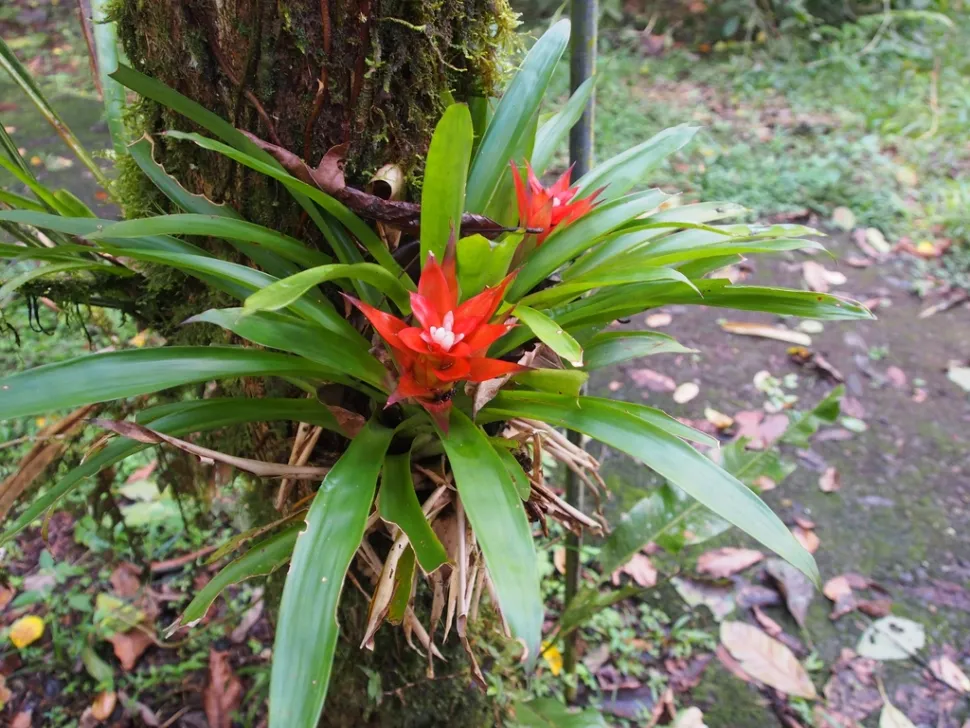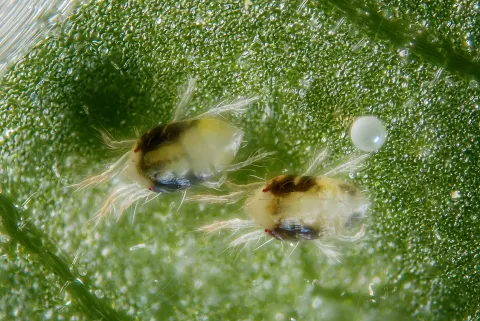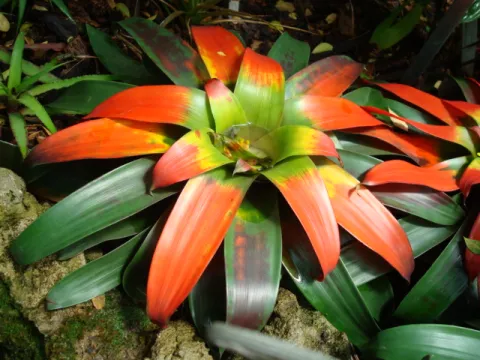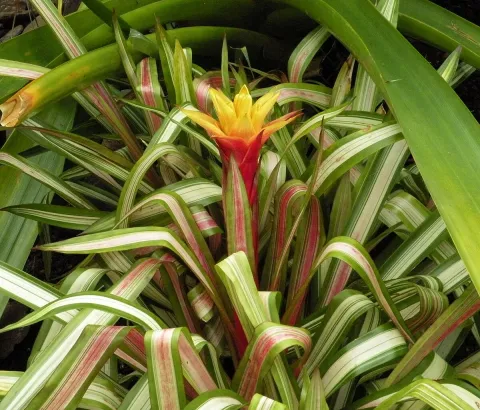Guzmania lingulata, the star of the Guzmania family
There are over a hundred varieties of Guzmania, the most widely marketed in Europe being Guzmania lingulata. This plant, native to South America, is attractive for its colorful blooms and rosette of star-shaped leaves.
How to recognize Guzmania lingulata?
An epiphytic perennial with an upright habit, Guzmania lingulata is taller than guzmania monostachia. It measures up to 70 centimetres in height with a 40-centimetre spread.
The plant has no stem, and its leaves grow in a star-shaped basal rosette.
The densely imbricated leaf blades are lanceolate, rigid and shiny green.
The inflorescence appears at the heart of the rosette, at the top of a 30-centimetre flower stalk, and consists of triangular, open bracts, also arranged in a star shape, and white or yellow flowers ( ). The color of the bracts varies from cultivar to cultivar; they are most often red or orange, but hybrids with pink, yellow or white bracts can also be found.
Guzmania lingulata is not a toxic plant for us or our pets, and presents no danger when handled or ingested.
Maintain your Guzmania lingulata
Guzmania lingulata is a monocapric plant. Even with the best care, it dies after flowering. Consider taking cuttings to propagate it!
Watering
Allow the potting soil to dry on the surface (at least 3 cm). Water the substrate with rainwater, keeping it moist but not soggy.
In summer, when the temperature is above 20°C, pour a few drops of water into the reservoir at the heart of the rosette. Empty it and renew the water every week to keep it clean.
Don't forget to remove any stagnant water from the cup or pot cover.
Brumisation
Guzmania lingulata come from tropical regions. They appreciate high humidity. To recreate it, spray the foliage with non-calcareous water at room temperature.
Fertilization
To promote the growth of your Guzmania lingulata , apply fertilizer in spring and summer.
Add a flowering plant fertilizer to the water once a month.
Follow up with a foliar fertilizer for bromeliads, to be sprayed on the foliage.
Fertilizer stimulates plant growth, but an overdose can damage the leaves. Read the manufacturer's instructions carefully before fertilizing your Guzmania lingulata.
Size
When flowering is over, cut off the wilted bracts with a clean, sharp tool to stimulate the production of new shoots.
Cutting
Guzmania lingulata blooms only once. The plant dies after flowering, but before it does, it produces offshoots. You can repot them to obtain new specimens for cultivation.
Wait until the offshoots are at least a third of the size of the mother plant, then remove them with a sharp knife that you've disinfected beforehand. Your cutting must have its own roots, otherwise it won't be able to grow and cling to its support.
Get a pot with a hole five centimetres in diameter. Fill it with potting soil for orchids or bromeliads. Plant your Guzmania lingulata in the center. Press down and water.
Exposure
Substrates
Diseases / Threats
Information
| Family | Bromeliads - Bromeliaceae |
| Type | Guzmania - Guzmania |
| Species | Guzmania lingulata - Guzmania lingulata |
| Lifecycle | Perennial |
| Foliage | Evergreen |
| Categories | |
| Tags |
Flowery Fritillary Soiffarde |
| Origin |
South America |
| Hardiness (USDA) | 11b |
| Leaf color |
|
| Flower colors |
|
Discover plants from the same family





















